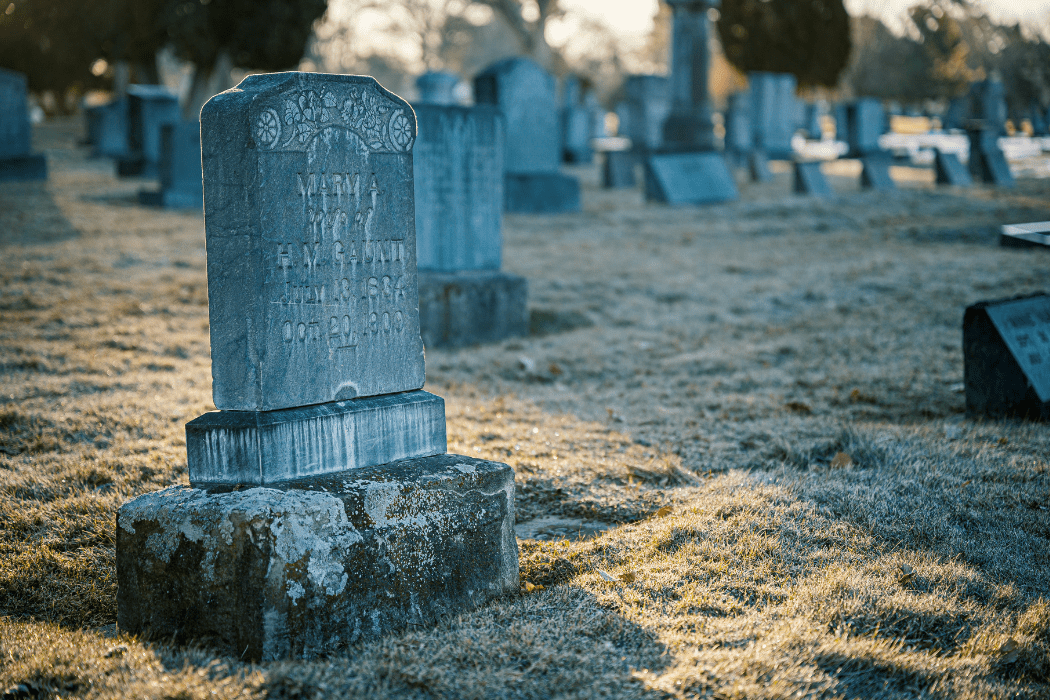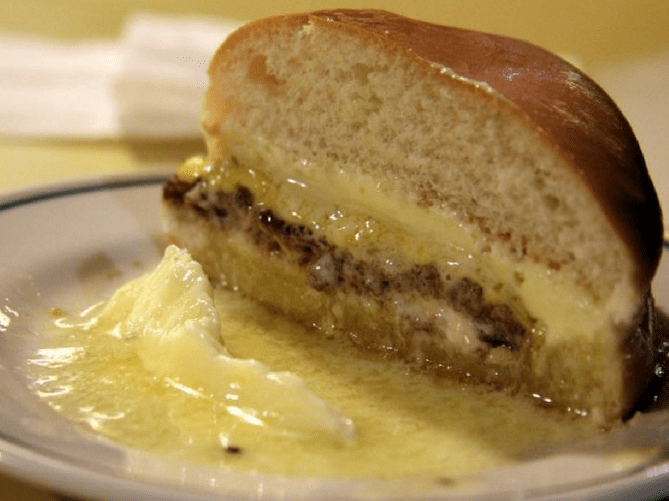
Photo courtesy of Canva
Ever visited Milwaukee’s Calvary Cemetery? First consecrated in 1857, it’s the city’s oldest Catholic cemetery, with more than 80,000 interments across 75 acres.
Among the thousands of interments, the cemetery has become home to some of the city’s most famous names. The founder and first mayor of the city is buried at Calvary Cemetery, and so are some of Milwaukee’s brewing giants. There’s even an infamous exorcist laid to rest on the grounds.
Whether you’re visiting the cemetery to reflect, learn about Milwaukee history, or pay your respects, keep an eye out for some of the most famous folks buried at Calvary Cemetery.
Solomon Juneau
Milwaukee’s Juneau Park isn’t named for the city in Alaska — instead, it’s named for Solomon Juneau, a Canadian fur trader and land speculator who founded the City of Milwaukee, and served as its first mayor.
Born in Quebec, Juneau was summoned to the Milwaukee area by fellow French-Canadian Jacques Vieau, a fur trader and the first permanent white settler in the area. Settling in present-day East Town, Juneau created Juneauville, which he later joined with Walker’s Point and Kilbourntown (presently called West Town) to form the City of Milwaukee. Juneau built the city’s first store and first inn, and in 1846 he served as its first mayor for a year. Solomon died a decade later, in 1856, and is buried in Calvary Cemetery.
While Juneau Park isn’t named for the Alaskan capital, there is a connection. Joe Juneau, a Canadian prospector whom the city was named for, was Solomon’s cousin.
Frederick Miller
Miller is one of the names most synonymous with Milwaukee. The brewing giant also lent its name to the city’s professional baseball field, as well as the Miller Valley neighborhood. But it easily could have been a different name that became famous throughout the city.
Frederick Miller, the founder of Miller Brewing Company, was born in Germany and named Friedrich Müller. Years later, the brewer changed his name and moved with his family to the United States — first to New York, and then Wisconsin.
Miller founded his brewing company in 1855, and brewed his product with ingredients sourced from local farms. The company, which has more than 10 different brands of beer in its profile, remained owned by the Miller family for more than a century until 1966.
The Passengers of the Lady Elgin
On Sept. 8, 1860, the Lady Elgin, a wooden-hulled steamship, was sailing from Chicago back to Milwaukee with hundreds of primarily Irish-American passengers on board, when it was rammed by a schooner, Augusta. The collision of the two vessels resulted in the sinking of the Lady Elgin, off the shore of present-day Highland Park, Ill.
Approximately 300 people died in the sinking, making it the greatest loss of life on open water in the history of the Great Lakes. Dozens of the victims were buried in Calvary Cemetery, where a monument was installed to commemorate the passengers who lost their lives. In addition to the cemetery’s monument, there’s also a historical marker in the city’s historic Third Ward dedicated to the disaster, and the lives that were lost.
Philipp Jung
While Philipp Jung’s name might not be instantly recognizable, the product that his business created definitely is throughout Milwaukee.
Jung, a German immigrant, moved to New York and Cincinnati, eventually settling in Milwaukee and working as a brewer. Jung married Anna Best, the daughter of brewer Jacob Best, and he worked at the Phillip Best Brewing Company before branching off and forming his own company with Ernst Borchert, the Jung & Borchert Brewing Company.
In 1892, the company was sold to Pabst Brewing Company, the makers of Pabst Blue Ribbon beer. After his company was sold, Jung continued to work in the brewery business, and in 1896 he purchased the Jacob Obermann Brewery before passing away in 1911.
Erhard Brielmaier
Erhard Brielmaier isn’t just buried in Calvary Cemetery — the noted architect also designed the cemetery’s gatehouse and Romanesque-inspired chapel. Born in 1841, Brielmaier lived in both Canada and the United States and spent decades working as an architect, designing buildings like Milwaukee’s Basilica of St. Josaphat. The basilica, which was completed in 1901, sits in the city’s Lincoln Village neighborhood and was modeled after St. Peter’s Basilica in Rome.
The dedicated architect designed numerous churches and hospitals throughout his lengthy career, with approximately 30 designed by Brielmaier and his sons in Milwaukee alone. Brielmaier died in 1917 and is buried in the same cemetery that houses some of his work.
Patrick Cudahy
When Patrick Cudahy moved his meat packing business, Cudahy Brothers, south of Milwaukee in 1892, the land that he moved to was in a town called Lake. That town no longer exists, now it’s named for the businessman who was instrumental in the founding of Cudahy, Wisc., a city that currently has more than 18,000 residents, according to the 2020 census.
The Irish immigrant also served as the patriarch of the Cudahy family, whose members went on to continue working in the family business and founding cities, like Cudahy, Calif. Cudahy died in 1919, and was interred in his family’s mausoleum in Calvary Cemetery.
Peter Deuster
There are plenty of Wisconsin politicians buried in Calvary Cemetery, including Peter Deuster. The German immigrant, who settled on a farm outside of Milwaukee in 1847, served as a congressman in the United States House of Representatives, representing Wisconsin’s fourth district for three consecutive terms. He also served as an American consul in Germany, during the presidency of Grover Cleveland.
Deuster wasn’t just a politician. He was also a newspaper editor, working on the Milwaukee Seebote, a daily German-language newspaper, as well as Telephone, a German-language weekly.
Adrian Hoecken
Adrian Hoecken, a Jesuit missionary, was originally from the Netherlands but was extremely well-traveled in the United States. As part of his missionary work, Hoecken worked among several Native American tribes throughout the country, starting with the Potawatomi Tribe in Kansas. He then worked among the Kalispel Tribe in the country’s Pacific Northwest, as well as the Flathead, Blackfoot, and Miniconjou Tribes.
Hoecken served as a translator at the Hellgate treaty negotiations in Montana, which established the Flathead Indian Reservation. In his later years, Hoecken was given lighter duties in Milwaukee, where he served St. Gall’s Church, a church that closed in the late 19th century. The missionary passed away at Marquette College in 1897 and is buried in Calvary Cemetery.
Rev. Walter Halloran
Sometimes, cemeteries can be so spooky that they can inspire great horror stories or movies. Other times, it’s the people in the cemeteries that can inspire a terrifying tale — like Rev. Walter Halloran, who’s buried in Milwaukee’s Calvary Cemetery.
Father Halloran was a Jesuit priest, originally from Minnesota, who taught at Marquette University in Milwaukee, but before he lived in the city, he famously took part in an exorcism at the age of 26, which served as the inspiration for the classic horror novel and film “The Exorcist.”
The priest assisted in the exorcism of Roland Doe — a 14-year-old boy who was alleged to be the victim of a demonic possession. The boy, who is only known by the pseudonym, underwent a series of exorcisms in the late 1940s. Halloran, the last surviving Jesuit priest to work on the exorcism, died in 2005 and was buried in Calvary Cemetery.
This article first appeared on Good Info News Wire and is republished here under a Creative Commons license.
Politics

‘I nearly died’: These women brought a grim warning to Wisconsin about abortion care restrictions
Traveling the country, they tell the real life-or-death situations that they faced because of extreme bans after the repeal of Roe v. Wade. For...

Opinion: It’s time for Congress to fight for small businesses instead of big corporations
May is National Small Business Month. Our elected leaders need to show leadership all year long. For the past 27 years I’ve been fortunate to pursue...
Local News

4 of the most iconic foods invented in Wisconsin
What is Wisconsin’s most iconic food? That’s a question we could spend all day debating, and for good reason: Badgerland is a food lovers’...

Four places it’s 100% okay to tip $0 in Wisconsin
Most people plan to tip at the usual suspects – restaurants, salons, ride-shares – but nowadays, it feels like customers are being prompted to tip...



